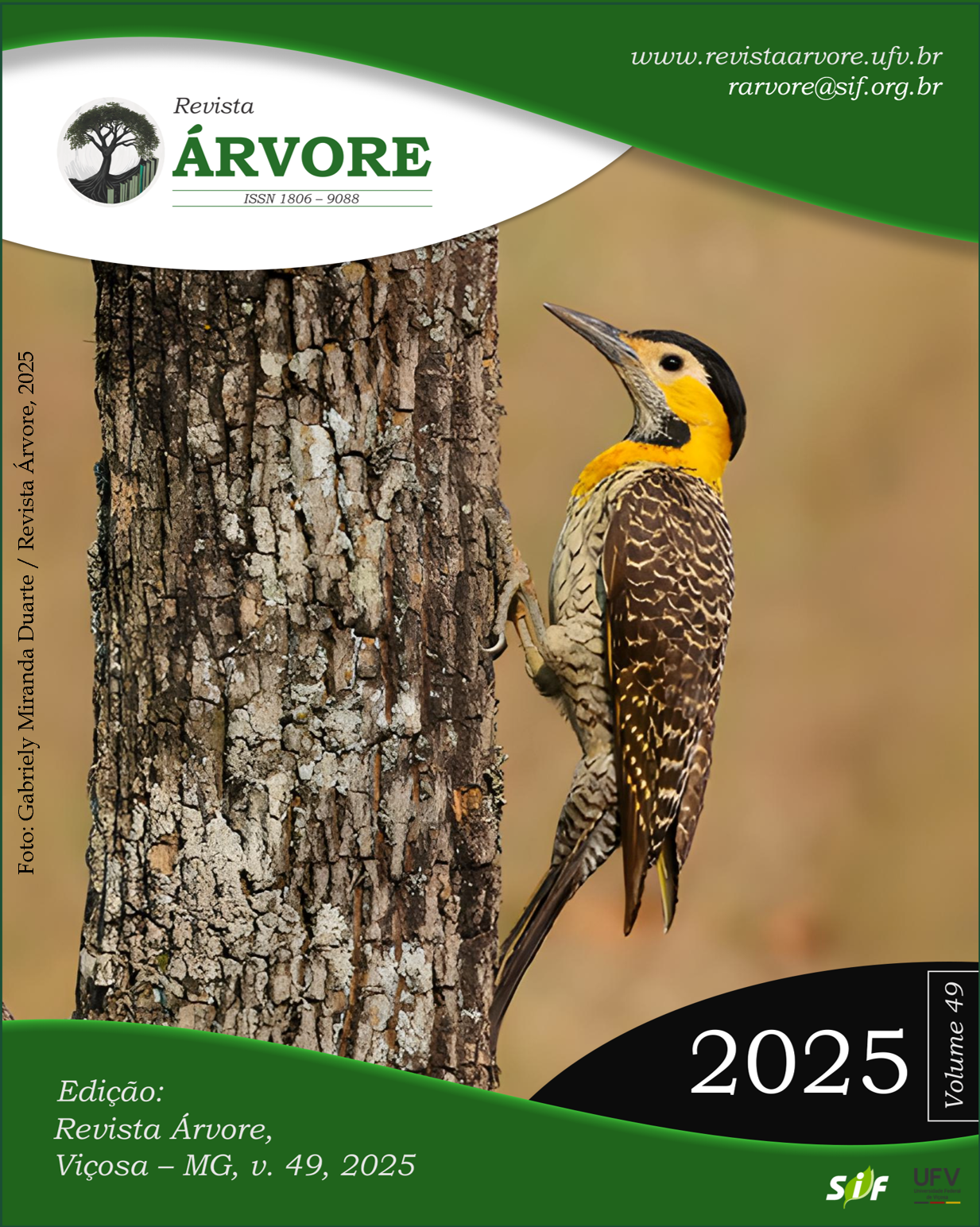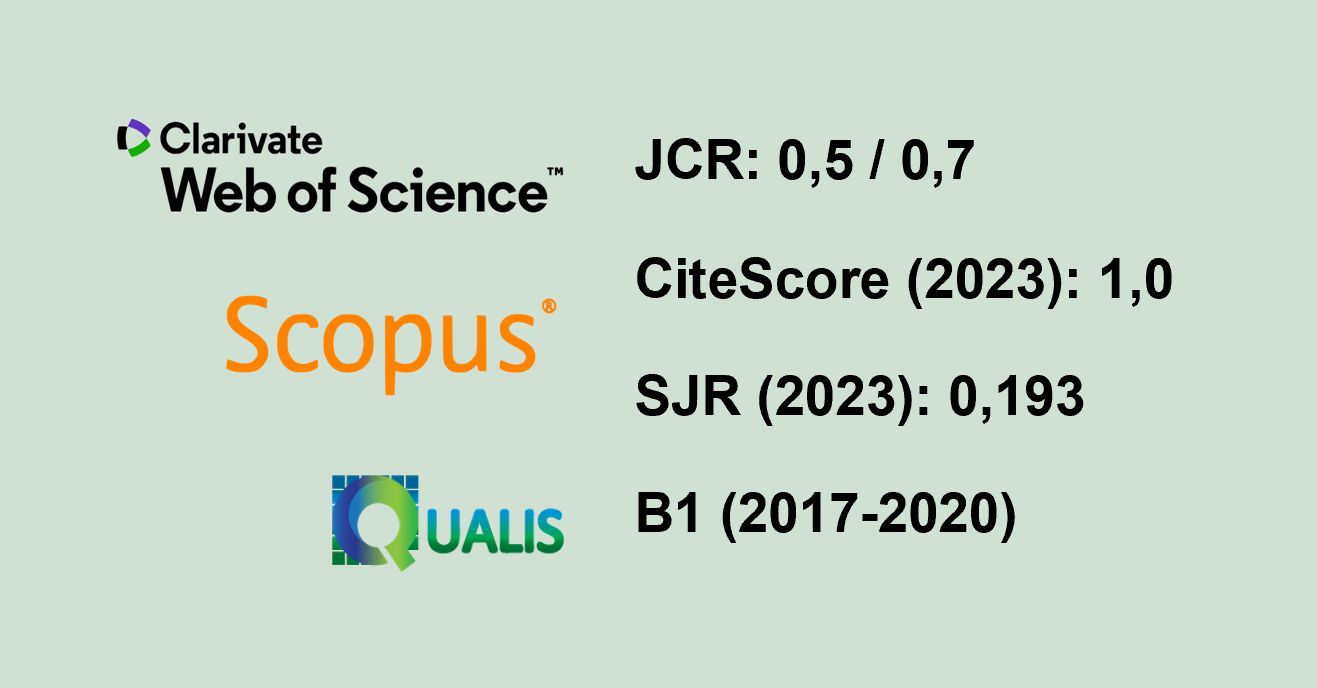Effect of wastewater and phosphate fertilization on photosynthetic pigments and macronutrients of Moringa oleifera Lam.
DOI:
https://doi.org/10.53661/1806-9088202549263869Keywords:
Irrigation efficiency, Water reuse, Fertigation, Chlorophylls, SustainabilityAbstract
The use of unconventional resources, such as treated domestic wastewater, has proven to be a promising alternative for agricultural irrigation in semi-arid regions, contributing to water sustainability. This study evaluated the effects of fertigation with wastewater and phosphate fertilization on photosynthetic pigments (chlorophyll A, chlorophyll B and carotenoids) and the concentration of macronutrients (N, P and K) in leaves of Moringa oleifera Lam. The experiment was conducted in a greenhouse at the Professor Ignácio Salcedo Experimental Station of the National Institute of Semiarid (INSA), in Campina Grande-PB, in a haplic PLANOSOL soil. The experimental design was in randomized blocks, with a 5 x 2 factorial scheme (five concentrations of wastewater and two levels of phosphate fertilization), totaling 10 treatments. Irrigation was performed manually, and the drained volume was collected to calculate evapotranspiration. At 90 days, the levels of chlorophyll A, B and carotenoids did not differ significantly between the treatments with wastewater, but phosphate fertilization increased the levels of N and P in the plant. Wastewater, applied at up to 75%, increased the N level and, at 100%, increased P and K. It is concluded that wastewater, with adequate management, is viable for Moringa cultivation, but caution is required due to possible chemical interactions and content proportions in the soil.
Keywords: Irrigation efficiency; Water reuse; Fertigation; Chlorophylls; Sustainability
Downloads
Published
How to Cite
Issue
Section
License
Copyright (c) 2025 Revista Árvore

This work is licensed under a Creative Commons Attribution 4.0 International License.
All authors agreed to submit the work to Revista Árvore and granted the exclusive license to publish the article. The authors affirm that it is an original work and has not been previously published elsewhere. The scientific content and opinions expressed in the article are the sole responsibility of the authors and reflect their opinions, not necessarily representing the opinions of the editorial board of Revista Árvore or of the Society of Forest Investigations (SIF).








